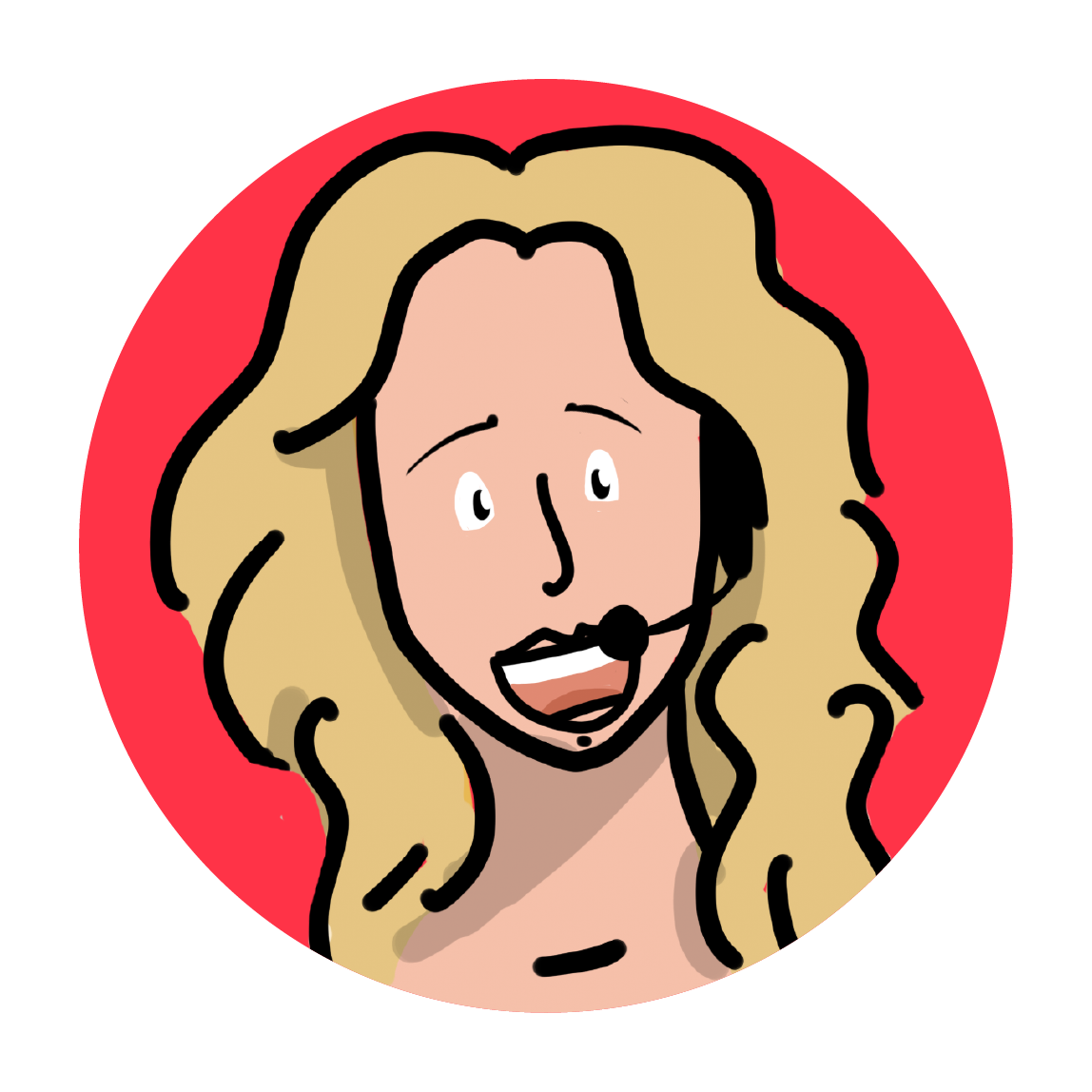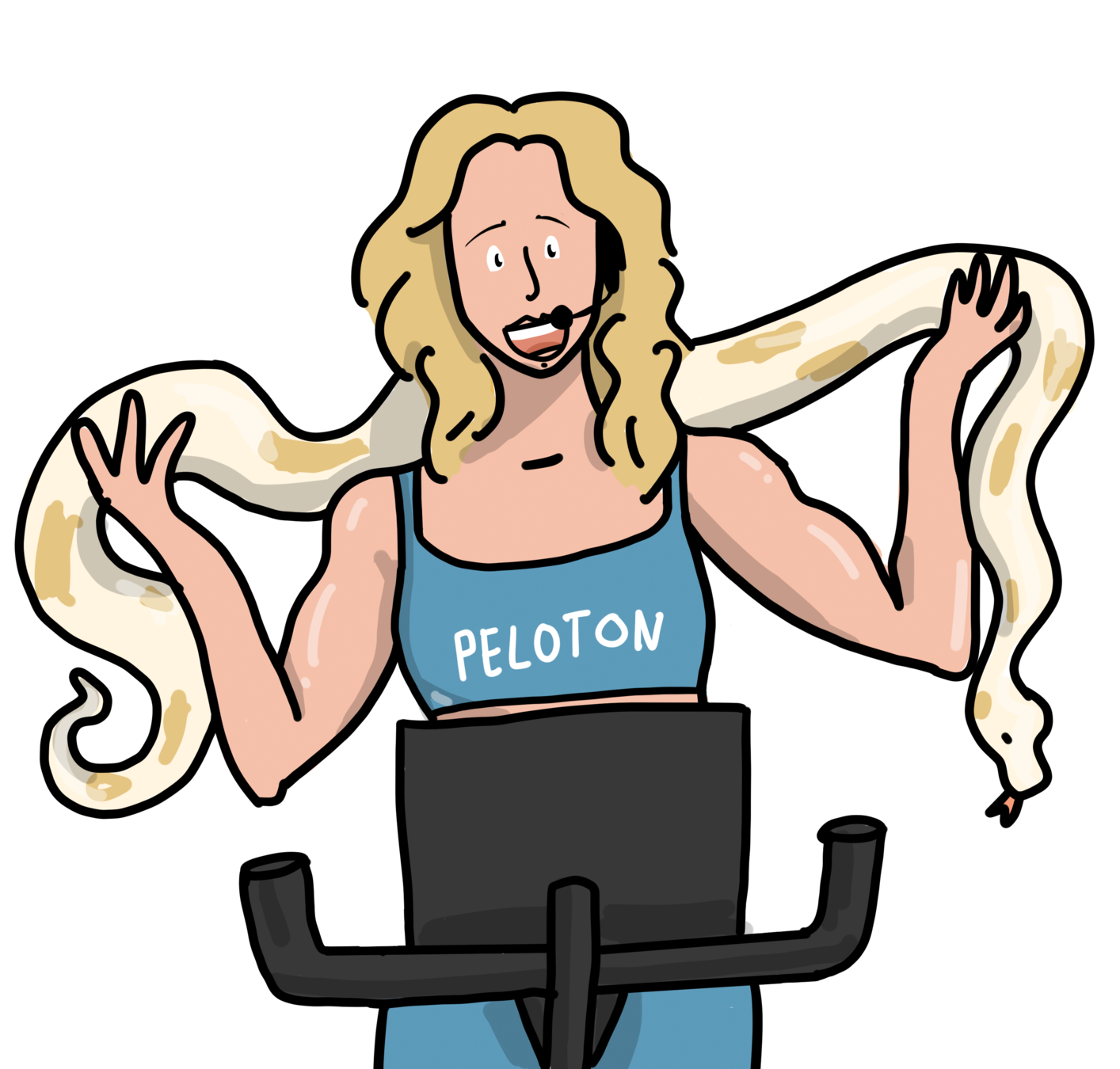THE BEHAVIORAL DESIGN BEHIND PELOTON
LATEST PRO CASE STUDY
How an innovative health and fitness start-up achieved 93% 1-year retention
20 Minutes


Estimated Duration:
In 2020, Peloton’s 12-month rate was 93%, meaning that 93% of Peloton’s users were still using the service one year after they started.
93%

A 93% rate is impressive for any service, but let’s put that in a little perspective. The average 1-month retention rate for all health related apps is only 4%. That’s not yearly retention, it’s just a single month!
93%

4%
Health Apps
12-month
1-month
And incredibly popular health don’t get much better than that. For instance, Headspace, the meditation app, has a 1-month retention rate of 8.5%!
93%

4%
Health Apps
8.5%
Headspace
1-month
12-month
So how does Peloton do it? How do they hook their users to an activity that’s so notoriously difficult to find motivation for, exercise?

In this case study we’ll be experiencing Peloton by taking 4 rides together with a couple of different instructors, each exploring a different aspect of Peloton’s user retention strategy! So get your tank top and sneakers and let’s get to it!


INTRO
RIDE 4
Community
Spin Diesel
FINISH

Select one of the rides above to start!


(back to the beginning)
RIDE 1
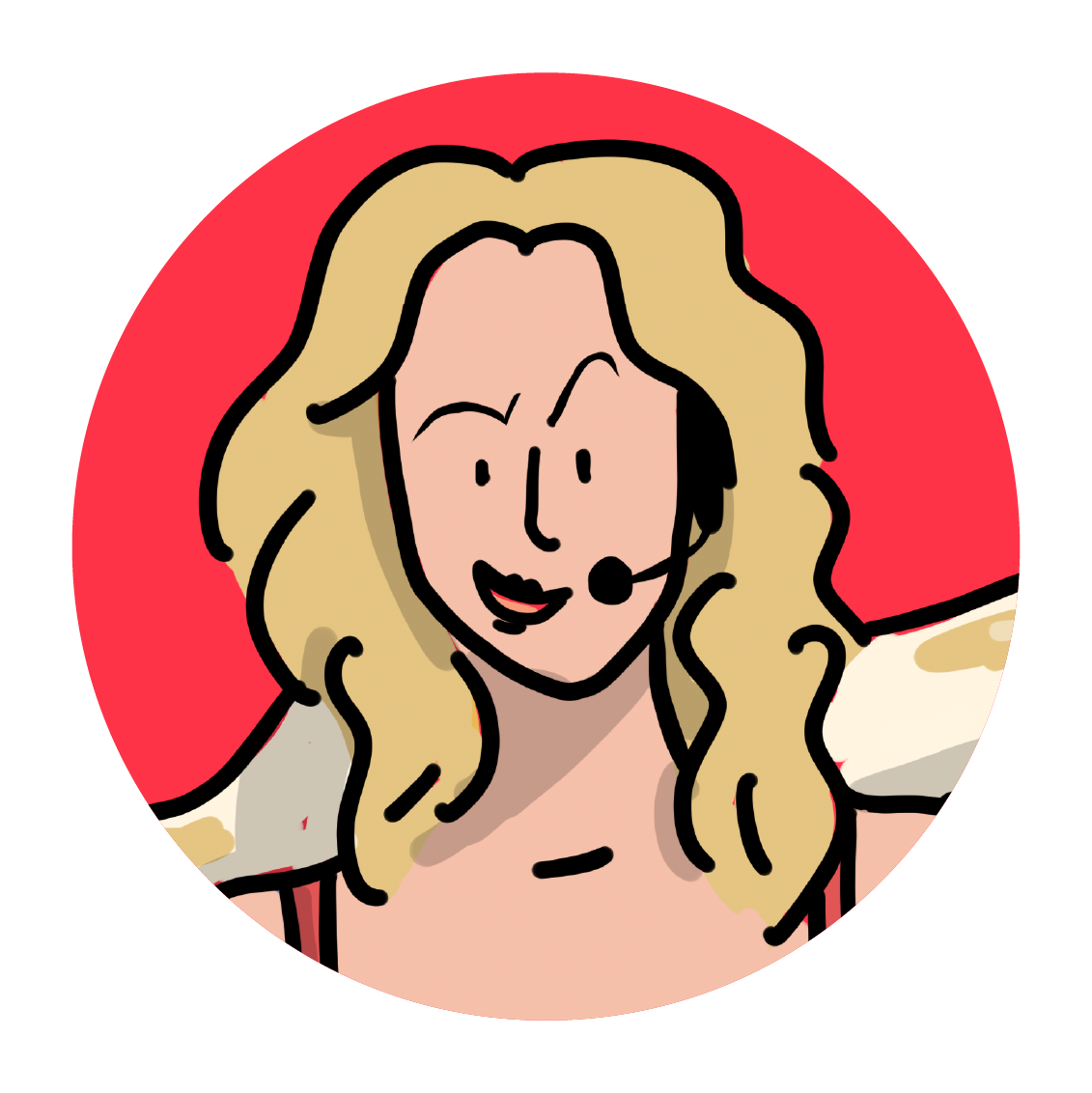
Britney Gears
5 Minutes

Duration:
YOUR INSTRUCTOR
Foot-in-the Door
This ride will take you on an exploration of Pelotons onboarding strategy and evaluate behavior change techniques used.




Hi, I am Britney Gears! Thanks for choosing to ride with me today! We're going to start nice and easy for everyone who is new to Peloton, or who just wants a nice warm-up workout.



By now you must be wondering about this scaly friend around my neck. This is Noodles! I bring her to my rides when I really want to put on a show. She's totally harmless!



On this ride, we're going to tackle 3 nice, rolling hills, and maybe we'll learn a little something about Peloton along the way. Ok, let's get going with hill #1!
point of purchase


Have you noticed how easy it is to get started with Peloton? I mean, there are definitely some barriers, like the $1,500 price tag on the standard bike. But, they use some great strategies to make it easy.




Even though the bike is expensive, Peloton offers a money-back guarantee for the first 30 days, and also gives customers the option for 3-year financing to spread out the cost a bit.


Money-back Guarantee
Financing Plan



These are both fairly common sales tactics that convince customers that expensive products are a safe investment, and take advantage of 2 distinct behavioral principles.


Money-back Guarantee
Financing Plan



The 30-day money back guarantee takes advantage of the default bias. It's easy to think "I'll try it out and if I don't like it, I'll return it." But once we have the bike, the chances of us deciding to return it are slim to none. It's just too much of a hassle!


Money-back Guarantee
Default Bias

The human tendency to avoid change and effort makes the path of least resistance the most likely path.


Second, the 3-year financing acts as a precommitment device. Even though financing agreements tend to make the product more expensive in the long run, the low cost of entry, and our bias toward the present and immediate gratification, lock us into paying that higher cost.

Precommitment Device
Financing Plan


The desire for immediate gratification, and our discounting of events in the future can lock us into a behavior far in advance, in this case paying off an expensive piece of equipment for the next 3 years.


Both of these strategies fall under what's called the foot-in-the-door technique, or perhaps more appropriately here, foot-on-the-pedal! Clearly this can be seen as an ethical concern and leaning too heavily on the "get now cheap, pay later" can backfire. As a customer, always be wary of these tactics!

Precommitment Device

Default Bias

Foot-in-the-door Techniques
When the first step in a process is easy, we are more likely to start. Reducing barriers to action combined with additional techniques to keep people engaged long-term can be an effective way of maintaining engagement.


But that isn't the only way Peloton utilizes the foot-in-the-door technique with their users. Now we're really getting warmed up, get ready for hill #2!

starting a workout


So, Peloton makes it easy to purchase a bike. But, once you have a bike, you may feel tempted to skip out on your workouts because you feel tired or like you don't have enough time.




Peloton has a subscription model, for around $39 a month, to give access to all of their classes and rides, just like this one (except actually nothing like this one).

Subscription Model




It's in their interest that you don't unsubscribe from their service and your participation also adds weight to their social features, something my friend Spin Diesel likes to talk about!

Subscription Model

Social Features



That is why Peloton makes some short and easy classes. If you don't have time to do a full 45-minute session, a quick 5 or 10 minute option might be more likely to get on the bike.



Short and Easy Workouts
"I'll just do a
quick workout"


And once you're on the bike, you are more likely to do another workout, and then maybe another. Sometimes all it takes to do something we want to do is to make the first step really easy!



Short and Easy Workouts
"I guess I have time for another"




Not to mention that the equipment is placed in your home, acting as a constant reminder to exercise. This is likely one of the top factors to Peloton's high retention. You can't miss the cue and you could literally start a workout in seconds (no need to even worry about what you're wearing).


Physical Presence



In a time when notifications get increasingly crowded out, there's a good case to be made for the massive difference physical devices or objects can make to boost retention. The Shapa Scale is another example of this boasting high app retention rates thanks to the presence of their wireless scale. If the Elf of the Shelf had an app, we're sure it would have boosted retention too!

Physical Presence





Your physical environment has a great deal of influence over your behavior, so an ever-present physical reminder to exercise can prompt action much more easily than a gym that you have to walk or drive to.

Physical Presence
1. Having consistent cues in your physical environment can maintain the behaviors associated with those cues for as long as they are present.
2. Immediate and easy access to a tool, like a stationary bike, increases the likelihood it will be used.



Alright, almost there, just one more hill to climb on this ride and we're done. Give me one last push!




For hill #3, you get to choose! If you want to bike it, bike it, if you want to walk it, walk it, and if you want to run it, run it!

autonomy


Not everyone wants to work out the same way. Although they're known for their spin bikes, Peloton offers 10 different types of exercise classes. Everything from strength training with weights, to walking outside, to meditation.



Personalization
Allowing users to decide how they want to interact with your product, and making it easy for them to do so, can increase the desire for users to return repeatedly.



Even within each types of exercise, Peloton does their best to offer as many options to exercise and interact with their service as possible.



Personalization
Allowing users to decide how they want to interact with your product, and making it easy for them to do so, can increase the desire for users to return repeatedly.



You can filter classes by length, class type, specific instructors, and the type of music during the class. This ensures every user can find their own niche, and can switch up their workouts for whatever they're feeling at the time.



Personalization
Allowing users to decide how they want to interact with your product, and making it easy for them to do so, can increase the desire for users to return repeatedly.



Allowing users to personalize their experience can really increase engagement! But even if you don't exactly know what you want, Peloton has a robust recommendation system that can help make that decision easier.



Much like YouTube or Netflix, Peloton remembers what classes you've taken and how you've rated them, and recommends classes based on that information.


Recommendations
When offering a large humber of choices to your users, offering relevant recommendations can help reduce cognitive overload, allowing quicker choices. Quicker choices means less user boredom and more user satisfaction.



Once you've completed a workout, you get recommendations for additional complimentary workouts as well. Utilizing the foot-in-the-door technique, Peloton keeps you exercising by recommending stretching exercises after cardio, or a walk after strength training.




All of the strategies discussed on this ride help users begin their Peloton journey and start to bond with their platform. But there are many more ways in which Peloton creates and reinforces that bond.

autonomy
Hill #3

Hill #2

starting a workout

Hill #1
point of purchase
Foot-in-the-door Techniques


Nicely done! You've reached the end of this ride with me, Britney Gears, and my snake, Noodles.



Now that you're all warmed up, I'd like to recommend you take your next ride with Spin Diesel. He'll give you a nice workout, and teach you about goal setting on the Peloton platform!


RIDE 2
Spin Diesel
3 Minutes

Duration:
YOUR INSTRUCTOR
Accomplishments
This short ride will explain the power behind Peloton's achievements and challenges.



Welcome to this short ride with me, Spin Diesel.



This ride is for all of you out there that got on your bike today even though you really weren't feeling it!



If you're looking for a little extra motivation to get on your Peloton day-to-day, might I recommend taking a look at some of Peloton's accomplishment mechanisms?



The first of these mechanisms is their achievements, or badges, which is a mechanism that lots of apps use these days to drive engagement.


Accomplishments




Many products implement achievements, badges, or trophies, but often these rewards are arbitrary and overused.

Accomplishments





For instance, in the language-learning app, Duolingo, one of the achievements is to upload a profile picture. What does that have to do with learning a language?!

Accomplishments

Duolingo



All of Peloton's achievements are earned through completing a certain number of workouts in a given category, exercising with others, or by reaching a certain daily or weekly exercise streak.

Accomplishments



To maximize motivation and interest in completing accomplishments, they should be relevant to the behavior you are encouraging and should become less frequent and more difficult to earn over time.

A side tangent on streaks here. They can often be a big double-edged sword that can just as easily de-motivate users as motivate them (looking at you again Duolingo).


Streaks

Tracking streaks motivates users that are able to maintain them long-term. But when a streak is broken users tend to lose most of their motivation and disengage with the associated behavior. Avoid designing streaks that are too easily broken, and give your users every opportunity to recover them.

But, although not perfect, Peloton's tracking of both daily and weekly streaks gives users a little more choice with respect to how they want to interact with the service over only tracking daily streaks.


Streaks

Tracking streaks motivates users that are able to maintain them long-term. But when a streak is broken users tend to lose most of their motivation and disengage with the associated behavior. Avoid designing streaks that are too easily broken, and give your users every opportunity to recover them.


Again, the achievements Peloton offers are very straightforward and logically build based on repetitions. However, they don't offer too much variety.



Accomplishments

To maximize motivation and interest in completing accomplishments, they should be relevant to the behavior you are encouraging and should become less frequent and more difficult to earn over time.


To solve for this, they are combined with topical, variable, and social challenges and special events that give users more interesting goals to aim for and more reasons to come back.




Accomplishments

To maximize motivation and interest in completing accomplishments, they should be relevant to the behavior you are encouraging and should become less frequent and more difficult to earn over time.

These challenges can vary in length, anywhere from a week to a year. And they vary in content, like a challenge to take a Latinx Heritage Month-themed ride, or getting in 4,000 minutes of exercise in a year.




Accomplishments

-
Relevant
-
Decreasing frequency
-
Increasing difficulty

The timed nature of the challenges and events makes them more urgent and scarce than the standard achievements. If you don't exercise today, or this week, you may completely miss out on a badge that all your friends have earned!




Accomplishments

-
Relevant
-
Decreasing frequency
-
Increasing difficulty
-
Scarce
-
Urgent

And creating themes around personal interests motivates people to engage with Peloton by reinforcing their personal identities. This is something I talk a bit more about in my other community-themed ride!




Accomplishments

-
Relevant
-
Decreasing frequency
-
Increasing difficulty
-
Scarce
-
Urgent
-
Identity-based

Admittedly, creating indentity-based challenges won't work for every product, but it works quite well for a service that constantly creates new content and prides itself on creating an emotional bond with its users.




Accomplishments

-
Relevant
-
Decreasing frequency
-
Increasing difficulty
-
Scarce
-
Urgent
-
Identity-based

An additional benefit to have fleeting, scarce accomplishments that disappear if uncompleted, is that unaccomplished goals are quickly forgotten by the user. This leaves only new, fresh things to aim for, adding a measure of novelty to the system as well.


Accomplishments

-
Relevant
-
Decreasing frequency
-
Increasing difficulty
-
Scarce
-
Urgent
-
Identity-based


The last way that Peloton reinforces motivation through their accomplishment mechanisms is by making them social.


Accomplishments

-
Relevant
-
Decreasing frequency
-
Increasing difficulty
-
Scarce
-
Urgent
-
Identity-based
-
Social
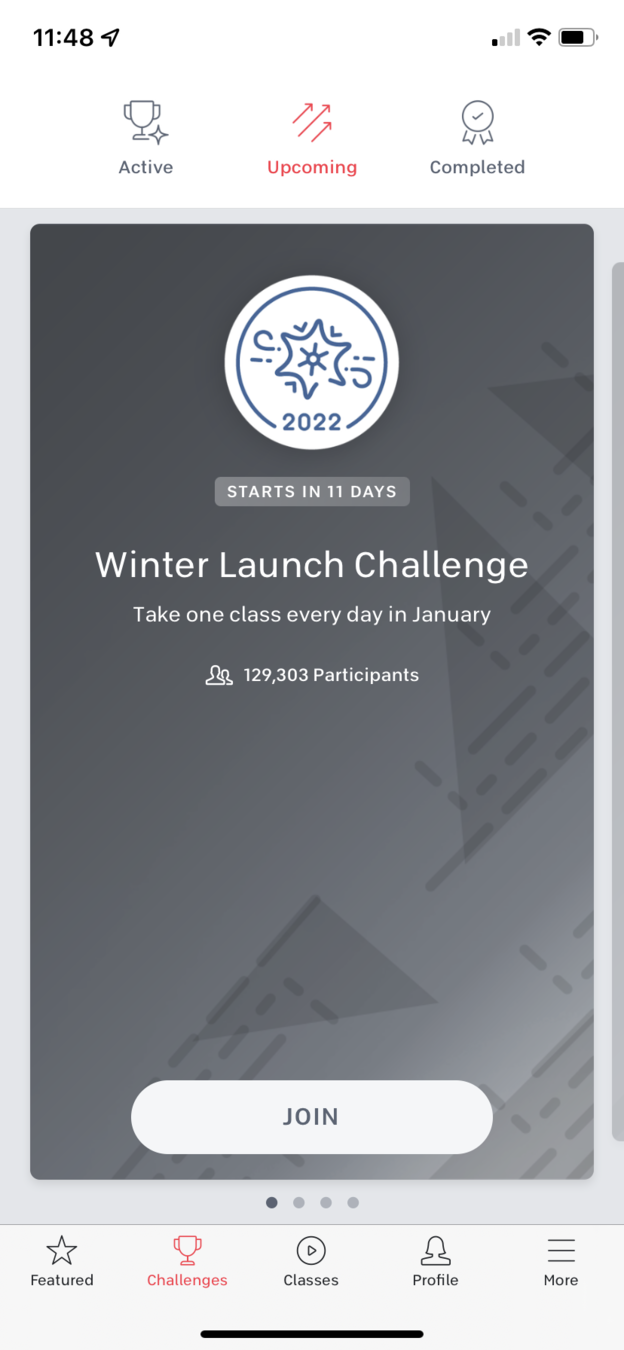


When you decide to take on a challenge, Peloton shows you how many other riders, and how many of your friends, are also attempting that challenge.


Accomplishments

-
Relevant
-
Decreasing frequency
-
Increasing difficulty
-
Scarce
-
Urgent
-
Identity-based
-
Social



When paired with scarcity and identity, social information like this can really enhance the feeling of a community where riders aren't just exercising in a vacuum (which I don't recommend, it's very hard to breathe).


Accomplishments

-
Relevant
-
Decreasing frequency
-
Increasing difficulty
-
Scarce
-
Urgent
-
Identity-based
-
Social



Instead users feel part of a larger community centered around their individual interests and goals. And Peloton is keen to reinforce a sense of community as much as they can!




Ultimately, though, Peloton's goal setting works because the goals are relevant to the user, they are urgent, relevant, identity-based, and social. So if you're ever designing a goal setting system, I'd keep those ideas in mind!


Structuring Engaging Accomplishments

-
Relevant
-
Decreasing frequency
-
Increasing difficulty
-
Scarce
-
Urgent
-
Identity-based
-
Social


Way to go! You've achieved a lot in the past few minutes, so take a second to congratulate yourself.



Also, by completing this ride you've unlocked a very special achievement. Good for you, fam. Well done!



Thanks for taking that ride with me everyone! If you're getting tired of old Spin Diesel blabbering on, I recommend riding with Britney Gears next. Her ride talking about Feedback is really invigorating!


RIDE 3
Britney Gears
5 Minutes

Duration:
YOUR INSTRUCTOR
Feedback
This ride will investigate the several ways Peloton uses feedback to enhance their experience.



Britney Gears here! A fun fact about me, I just won a big fight with my dad, and let me tell you, that man is toxic!



Now let's talk about feedback. I'll be calling out to you if you're giving it your all, so match my energy if you can!



By the way, if you enjoy this ride be sure to give me a good rating at the end. Peloton uses that information to help recommend rides like this one to you.




This is the first way that they utilize feedback to improve their experience.
User Ratings





Peloton gathers information about what classes you choose to take (like the instructors you use frequently) and how much you enjoyed them in order to tailor the whole service to you.
User Ratings






It works in much the same way that Netflix does for recommending movies and TV shows, or how Spotify recommends music.
User Ratings






While this feedback keeps you engaged with the Peloton platform by personalizing the experience, they also utilize other forms of feedback as well.




Where Peloton truly shines is in the ability to make you feel like you're in the room with the instructors and riders in your class, even while you're stuck at home.




Each instructor interacts with the users that attend their live class recordings. They call out people who reach goals or complete challenges while in class.



But perhaps more importantly, the Peloton instructor mantra is "I see you".




Instructors use this phrase all the time to create an emotional connection with the users that they actually cannot see.




What makes this phrase so powerful is the constant, repeated usage. If you hear a piece of information, or a phrase like this one, enough, you start to believe it's true. This is known as the Illusory Truth Effect.

Illusory Truth Effect

When someone hears the same phrase or piece of information again and again, they begin to believe it more and more.



Peloton chose a great phrase for their instructors to repeat. "I see you" conveys that there is someone you are accountable to, and someone who cares if you show up to your workout.
Illusory Truth Effect

When someone hears the same phrase or piece of information again and again, they begin to believe it more and more.




This is further nurtured by instructors regularly calling out names of people in the class. This is mainly in the form of welcoming someone on their first ride or congratulating someone for an achievement "Congrats on 100 rides, Sara!". #socialproof




Further reinforcing this connection with the instructor is that they often talk about their personal opinions or their take on pop culture during rides.



By sharing ideas around non-exercise topics, it blurs the line between instructor and friend.
Parasocial Relationships
When a celebrity, or a character from TV or the movies, shares their opinions, life story, or other personal information, people can develop emotional connections to them. We like, trust, and want to interact with people we feel emotionally connected to.



In that spirit I'd like to share something about myself with you all.


My name used to be Olivia Riderigo, but I love late 90s and early 2000s pop music. I changed my name to be close to my favorite artist. But, I won't tell you which one!






In the same way that you can develop parasocial one-sided relationships with your favorite celebrities or TV show characters, Peloton's instructors create a one-sided emotional bond.
Parasocial Relationships
When a celebrity, or a character from TV or the movies, shares their opinions, life story, or other personal information, people can develop emotional connections to them. We like, trust, and want to interact with people we feel emotionally connected to.





But it isn't just instructors, like me, that can interact with you while you're exercising! A leaderboard of riders is constantly on the screen whether you're riding in a live class or not.




The leaderboard gives you a live comparison of how you're doing aginst all the other riders. Although leaderboards are often misused in behavioral design and gamification, doing more harm than good, this one is implemented quite well.




Generally, leaderboards are used to increase the motivation of competitors. But they can easily backfire for all the people who aren't close to the top.




If you aren't close to being first, why bother competing at all? Especially when your competition is hundreds of other people. Beating all of them can seem like a daunting task.




Learning how to implement competitive leaderboards properly could be a whole case study itself! So for now let's just say that when designing a leaderboard it is important to carefully consider what you are measuring, the context it is being measured in, and how that information is presented
Competitive Leaderboards
-
Measurement
-
Context
-
Presentation




However, the goal of the Peloton leaderboard isn't entirely competitive, but social as well. By making the leaderboard a live feedback mechanism, Peloton reinforces the idea that you aren't exercising alone, you're working hard just like thousands of others in a shared experience.
Social Leaderboards

-
Reinforce shared experience



Complementing the leaderboard is the ability to send other riders virtual *high fives* during workouts. This live support mechanism provides an extra boost to the social atmosphere of the leaderboard.
-
Allow users to support each other
Social Leaderboards

-
Reinforce shared experience






You can send high fives to other people who are struggling just as hard at the same workout as you are, and they can send them right on back too!
-
Allow users to support each other
Social Leaderboards

-
Reinforce shared experience






Ultimately, Peloton does a really good job at making your solo workout feel like a social experience through instructor and peer feedback.
Instructor Feedback
Peer Feedback



And lastly, once you're done with your ride, Peloton gives you feedback on your performance. After a bike workout, that means things like energy produced, cadence, and speed.





Peloton also gives you information about how your performance in the current workout compares to your previous workouts.





Recently they've implemented the Strive Score, a score based on your heart rate during a workout. The higher your heart rate, and the longer is stays that way, the higher your Strive Score.





This is a really interesting way of providing personal feedback that can be compared across many different kinds and durations of workouts, and doesn't entirely depend on fitness level either.






Instead of coming in 120,000th place on the leaderboard, you can instead see how you stack up against your own previous scores. Because the feedback is based on your own individual capability, rather than comparison with others, it reduces the chance that the feedback will be demotivating.






You could compare your Strive Score against your friends or others, but the fact that it is tied to your body's physiology rather than an external indicator like speed or wattage means that it is best used as a personal benchmark.




This is hard to replicate, but the takeaway here from a design perspective is that sometimes offering your users ways to compete against themselves can be more motivating than competing with others.

All-in-all, Peloton uses feedback to enhance the usefulness of their recommendations, develop a connection between you and their instructors, to create a social, interactive atmosphere during workouts, and increase motivation to improve against yourself and others.




Thanks for taking this ride with me today, you did great! I see you!



I touched on it a bit here, but take a look at Spin Diesel's ride #4 next to get a better view of how Peloton creates a community around exercise, and how they increase motivation through social experience!


RIDE 4
Spin Diesel
5 Minutes

Duration:
YOUR INSTRUCTOR
Community
This ride explains the ways Peloton engenders a feeling of connection between the company, the instructors, and the riders.
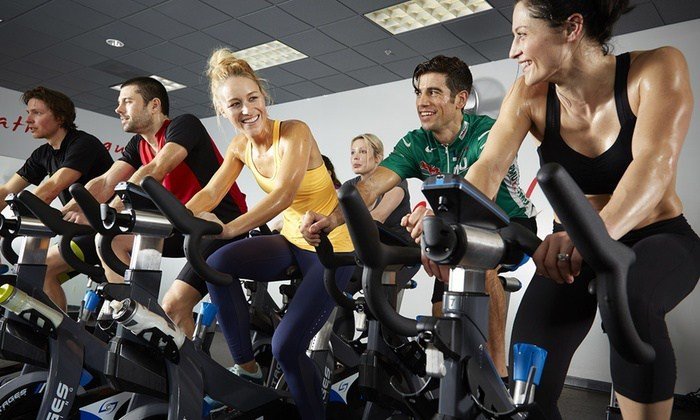


Welcome to this interval ride with me, Spin Diesel. When you're with me, you're part of one big family!



And in this family we leave no one behind. So get ready for an intense ride!




We try hard at Peloton to cultivate a strong sense of community. This is communicated from the first interaction most people have with Peloton.




Our website is called onepeloton.com. The name implies everyone with a Peloton machine and subscription is part of a single collective community.
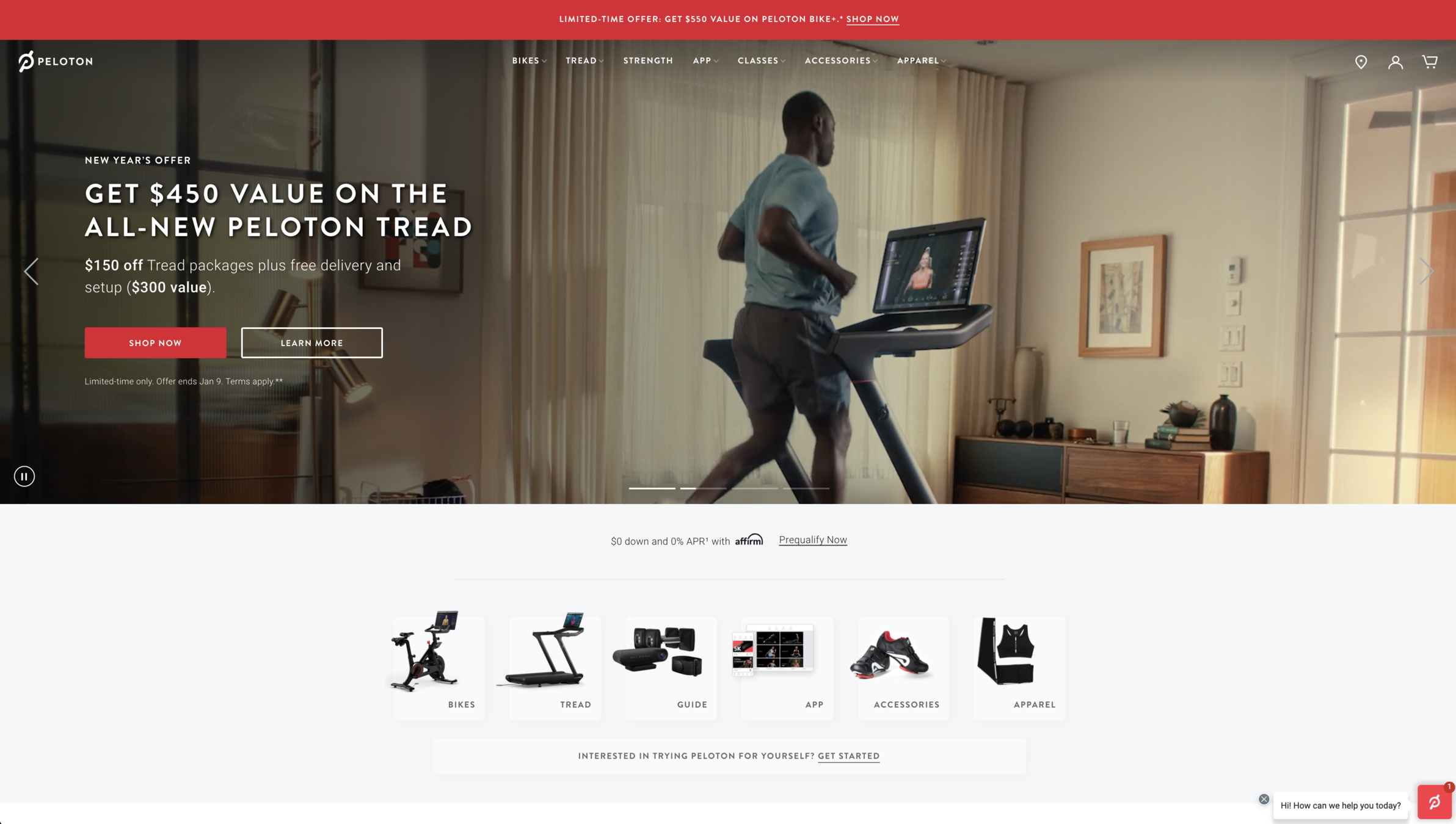



Peloton uses three techniques to cultivate a feeling of community for their users. First they develop an identity around the product, then they establish social norms around exercise behavior, and thirdly they create a feeling of accountability.

identity

social norms

accountability



Let's talk about identity first!

identity



Identity is an important motivational tool because people are deeply motivated to act in accordance with their own personal identities.

identity



If someone sees themselves as a writer, they will be more likely to write, if they see themselves as a Tottenham Hotspur fan, to root for another team would feel against their nature. Especially Arsenal.




So how does Peloton help their customers create a Peloton user identity?



It can feel like you're joining an exclusive club when you purchase a Peloton. The clever marketing and large up-front investment quickly turn you into, not just someone who exercises, but someone who exercises with a Peloton.
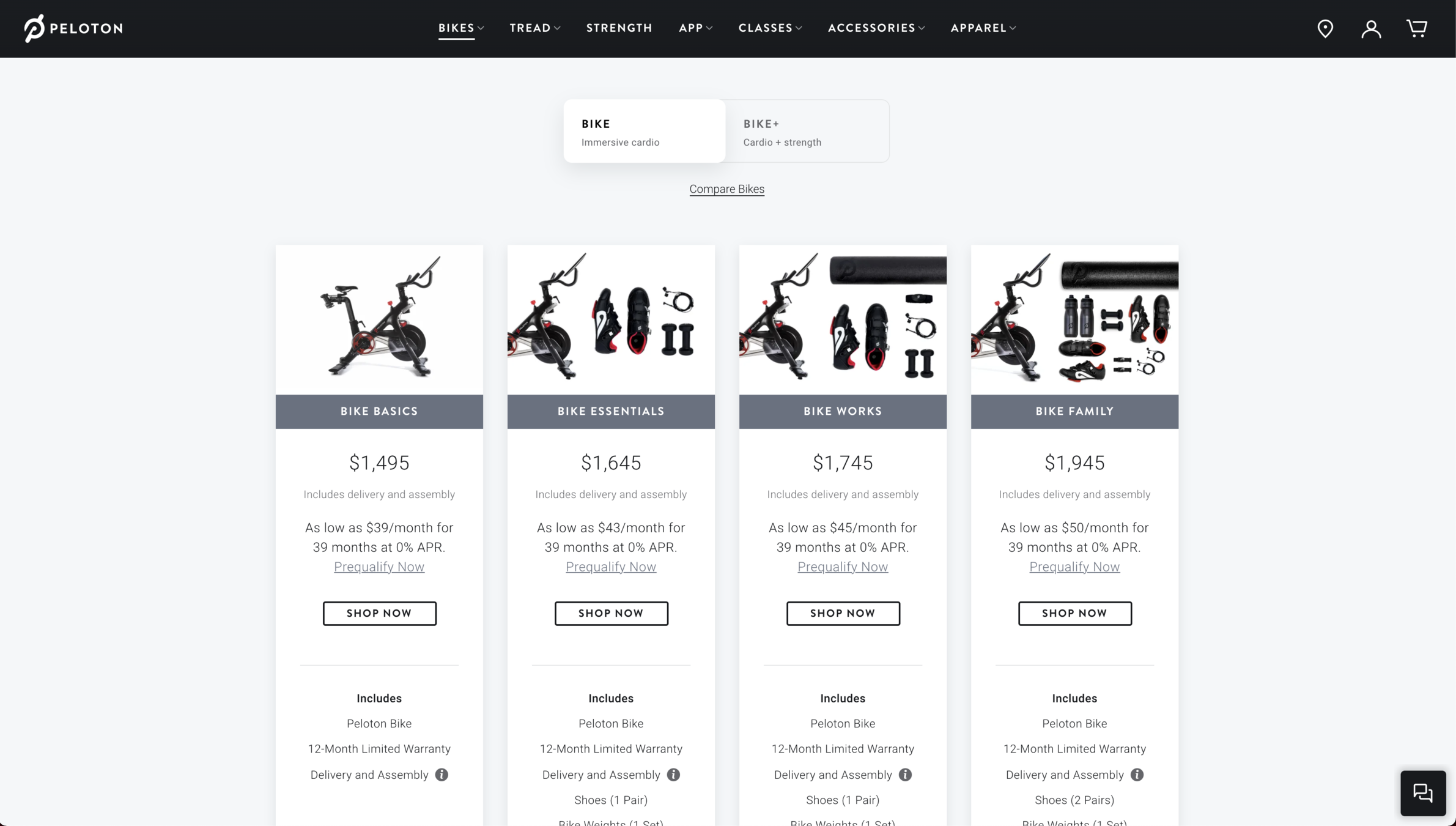
Exclusivity
Expensive or difficult to obtain products or experiences can create a feeling of connection with others who have the same exclusive products or experiences.




Most of Peloton's marketing focuses on a high-end experience. They show their bikes placed into huge, beautiful houses, ridden by attractive people with and impeccable sense of exercise fashion.
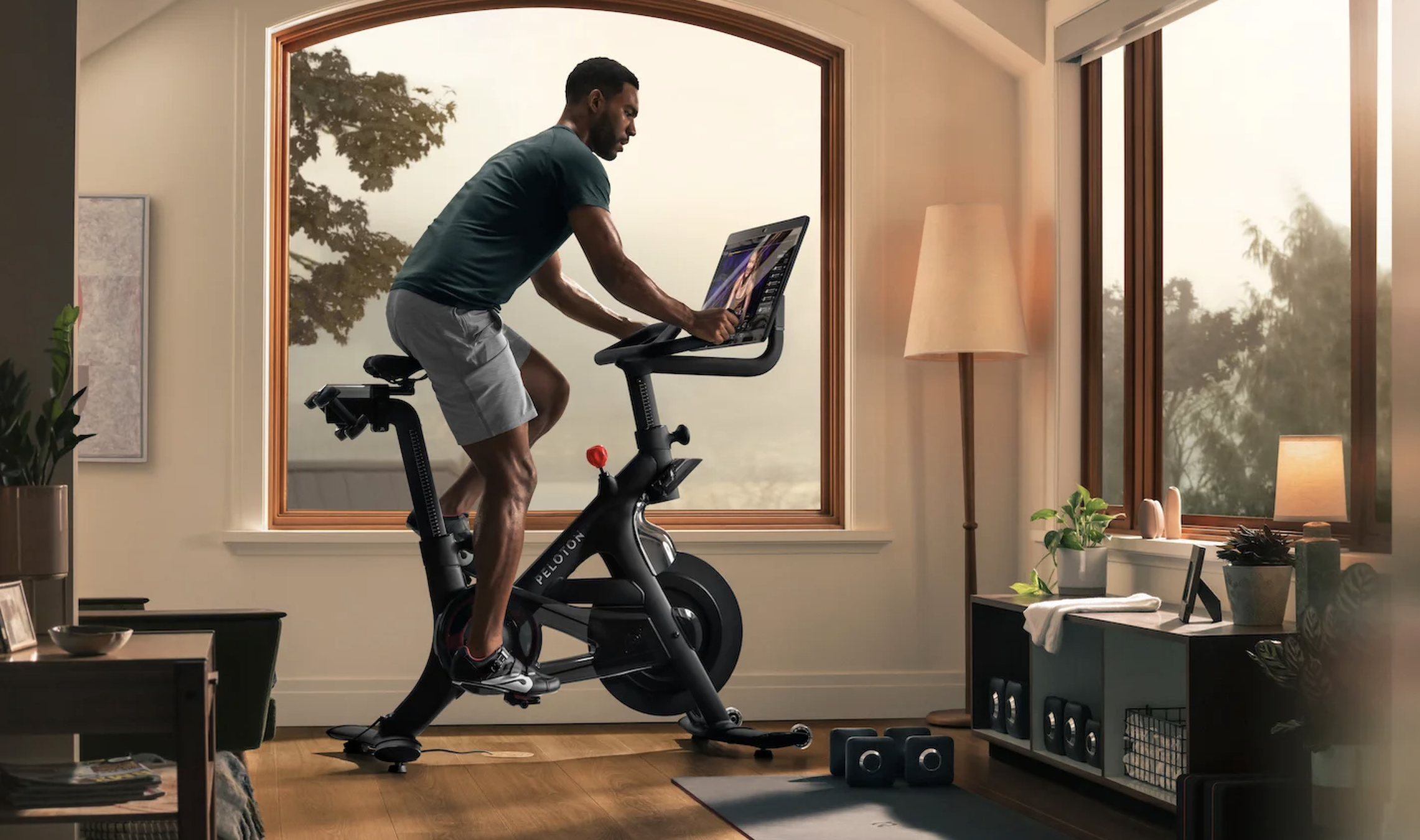
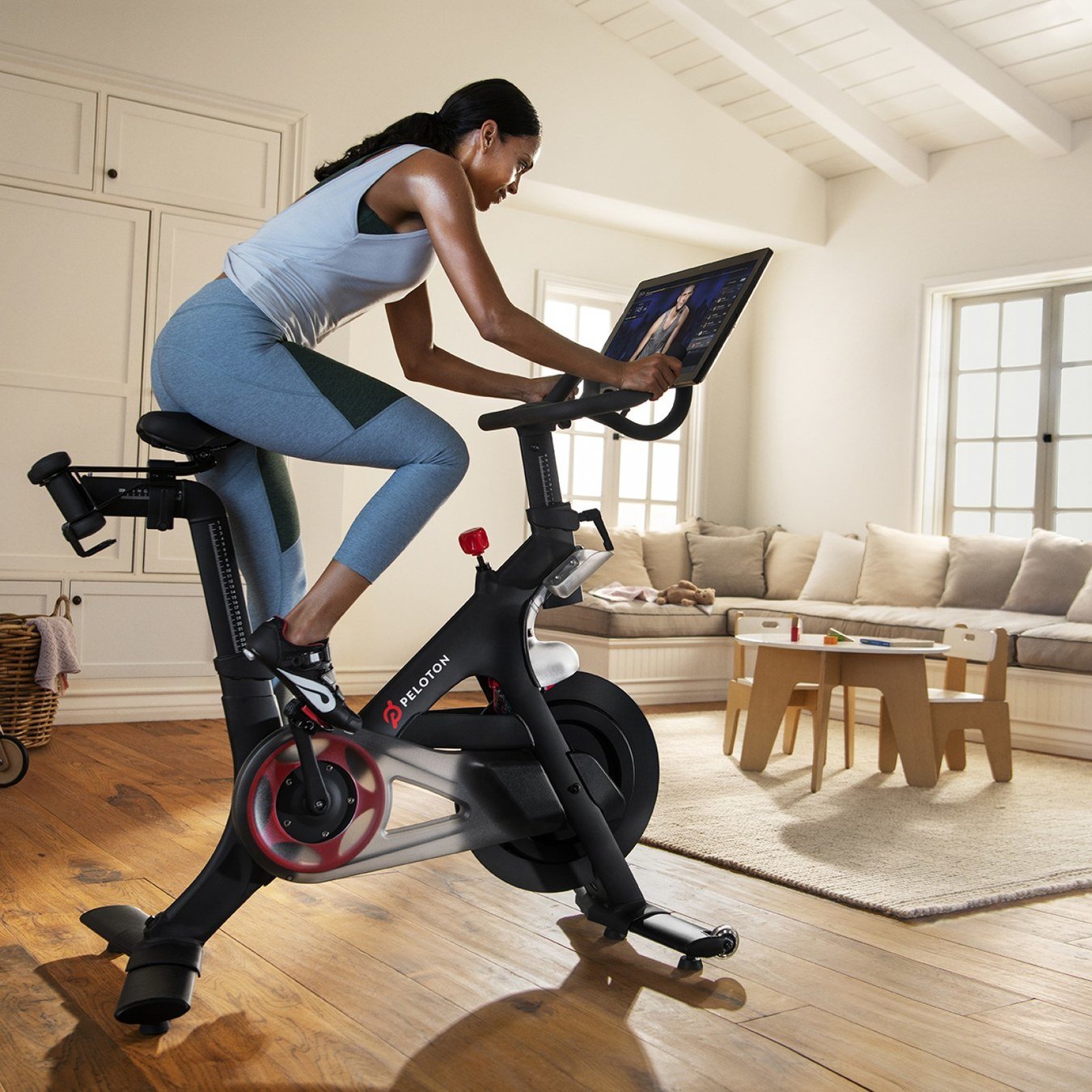


Exclusivity
Expensive or difficult to obtain products or experiences can create a feeling of connection with others who have the same exclusive products or experiences.




By buying into Peloton, you are joining those beautiful people and everyone else who has bought into the exclusive club.




Exclusivity
Expensive or difficult to obtain products or experiences can create a feeling of connection with others who have the same exclusive products or experiences.




Apple took a similar strategy in the 2000s when they aired their famous Mac vs. PC commercials. Differentiating themselves as the "cool" brand at a higher price point.



The high price and high-end exclusive feel pushes you into a 'Peloton user' identity, which slowly becomes stronger as you use the machine and the service more and more.





Once you start to personally identify yourself as a 'Peloton user', to abandon your Peloton would feel like going against that identity. Furthermore, post-purchase rationalization and cognitive dissonance from making a large financial commitment further reinforces this.
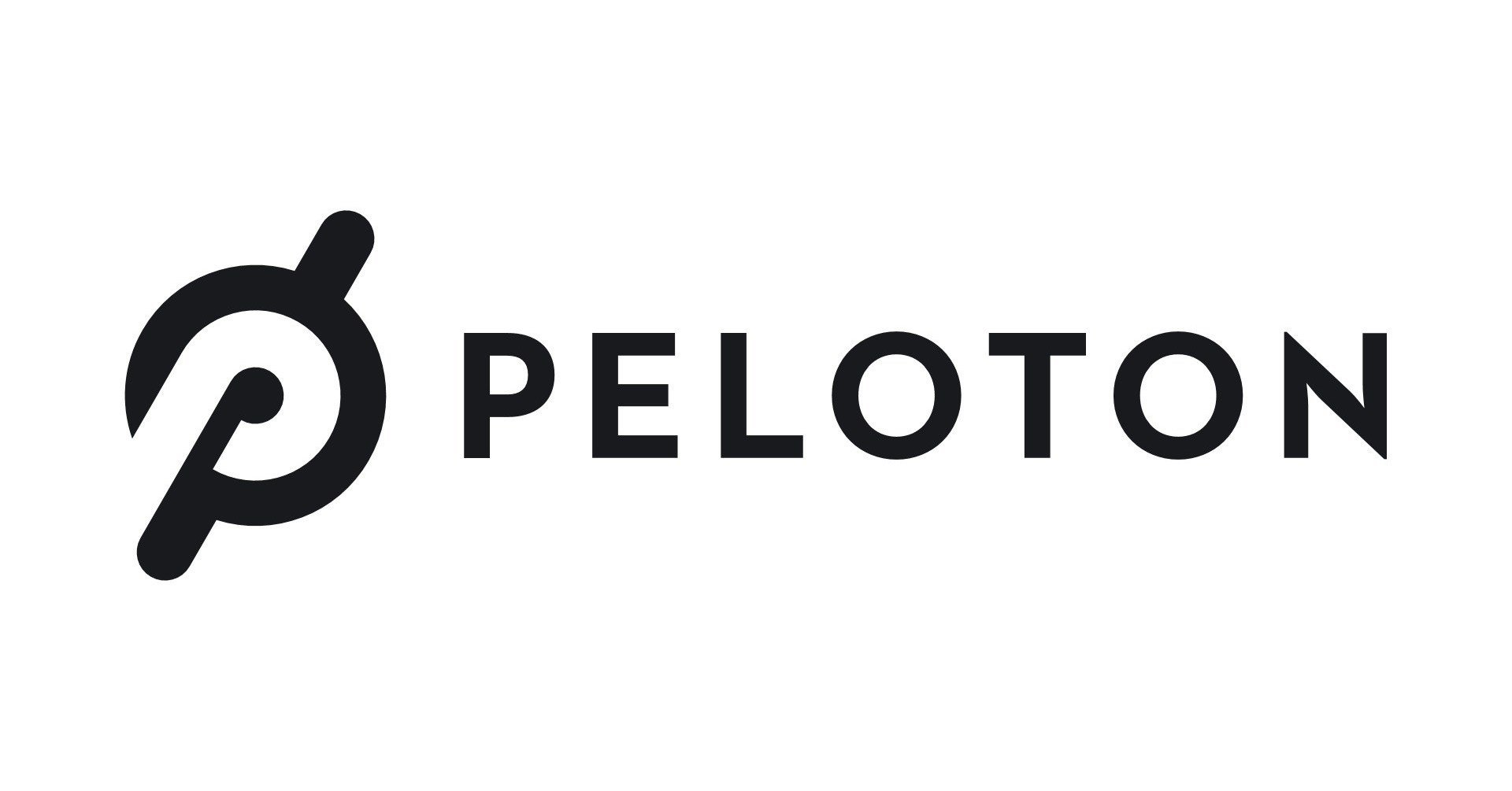



If you've been on Birtney Gears' feedback ride, you know that from live competition through the leaderboard, to virtual high fives between riders, to instructors that call you out for working hard and pushing yourself, Peloton makes you feel like you aren't really alone in your living room.




And that brings us to point number 2, social norms.
social norms




Once you feel like you're part of a group, the actions and beliefs of the rest of that group become important to you. Your self-identity is determined partly by how well you behave in line with others of that identity.

Social Norms
We want to act in accordance with how we believe our community wants us to act. This feeling increases with how strongly we identify with the community in question.



Besides seeing other Peloton users on the leaderboard during live rides, there are other techniques Peloton uses to make the behaviors of the group more salient to you.
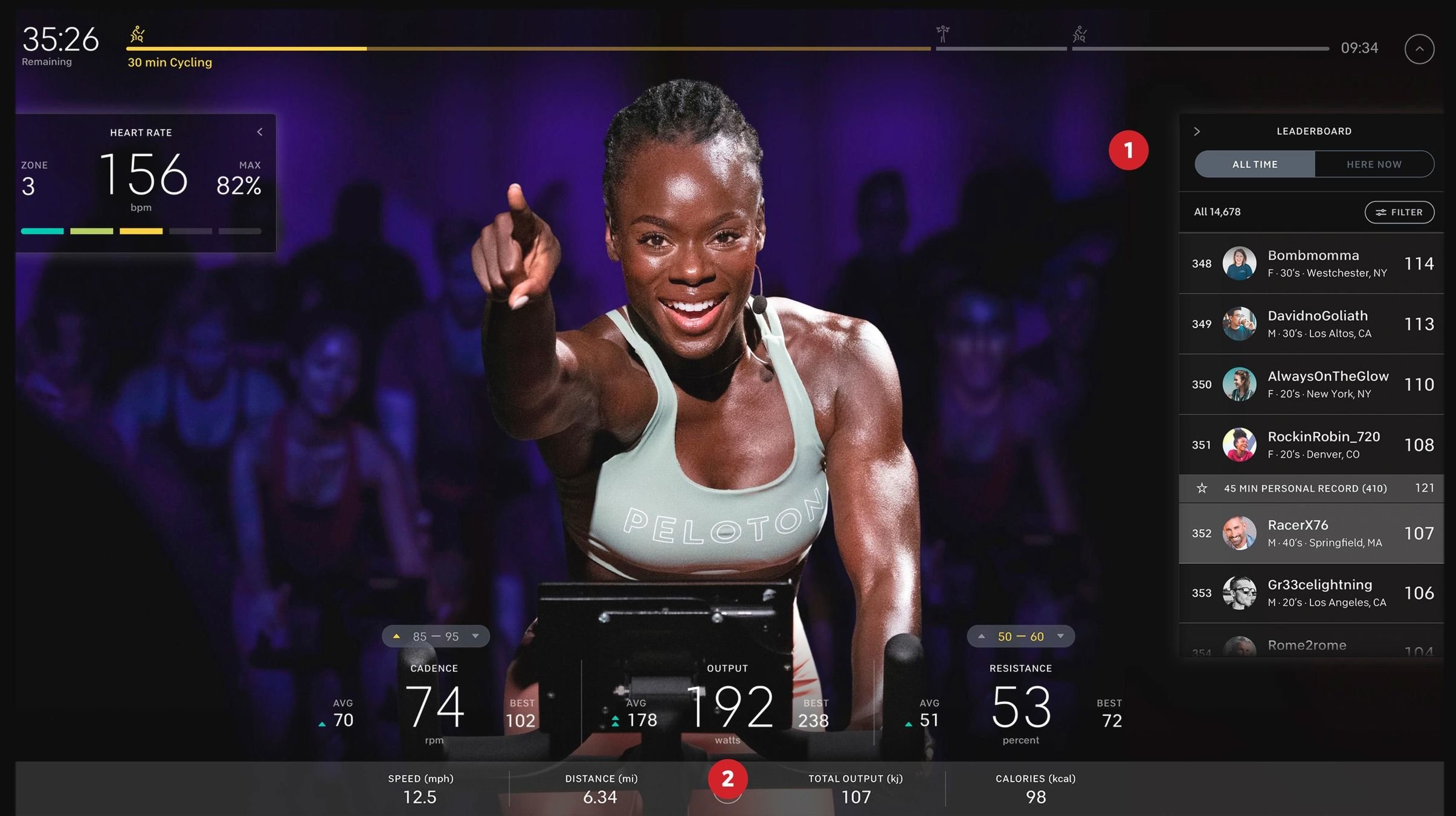



Peloton allows you to follow other riders, and lets you follow them back. This feature, common among social media platforms, allows you to pick out the people that you value most and get extra information specifically about them.
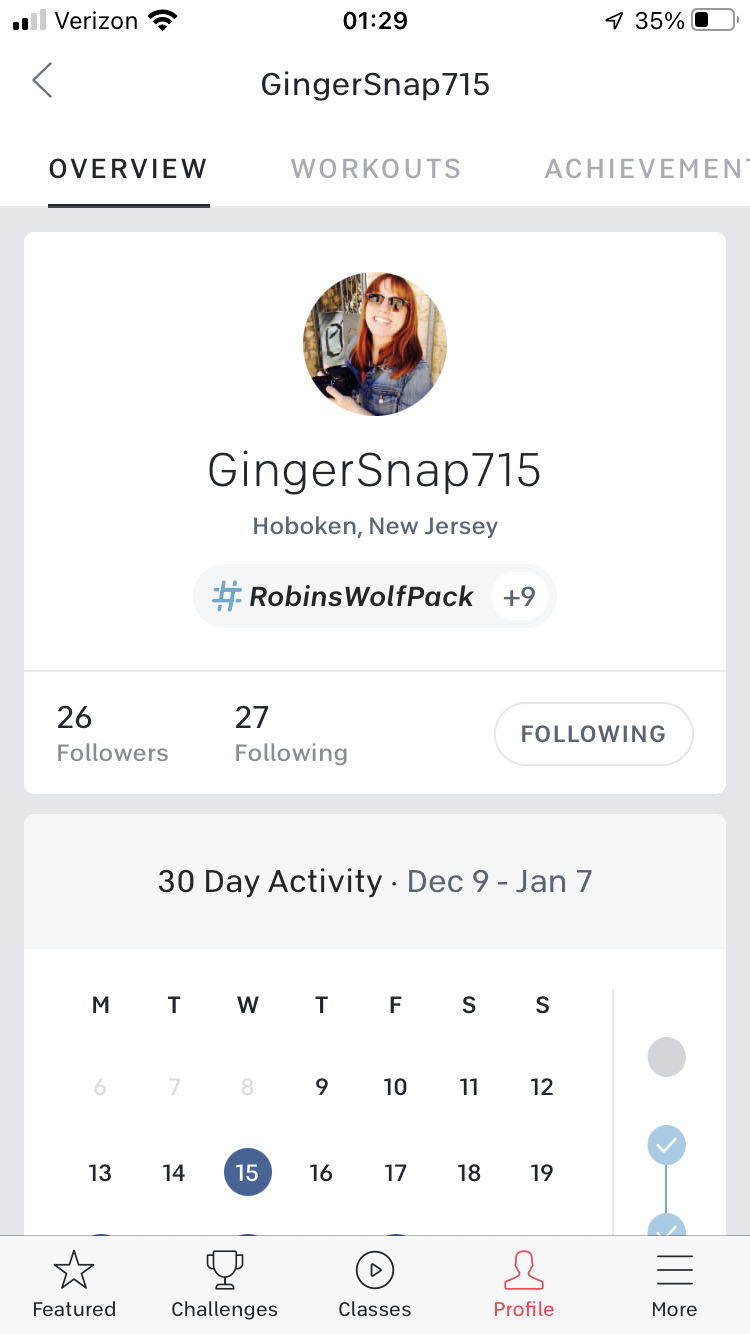



You've chosen people to follow that are your friends, family, or others that you respect and admire, so this group becomes an in-group within Peloton's larger community.




Peloton uses this in-group to motivate you further by sharing the behaviors that those in-group members all perform, including what workouts they have completed, and when.
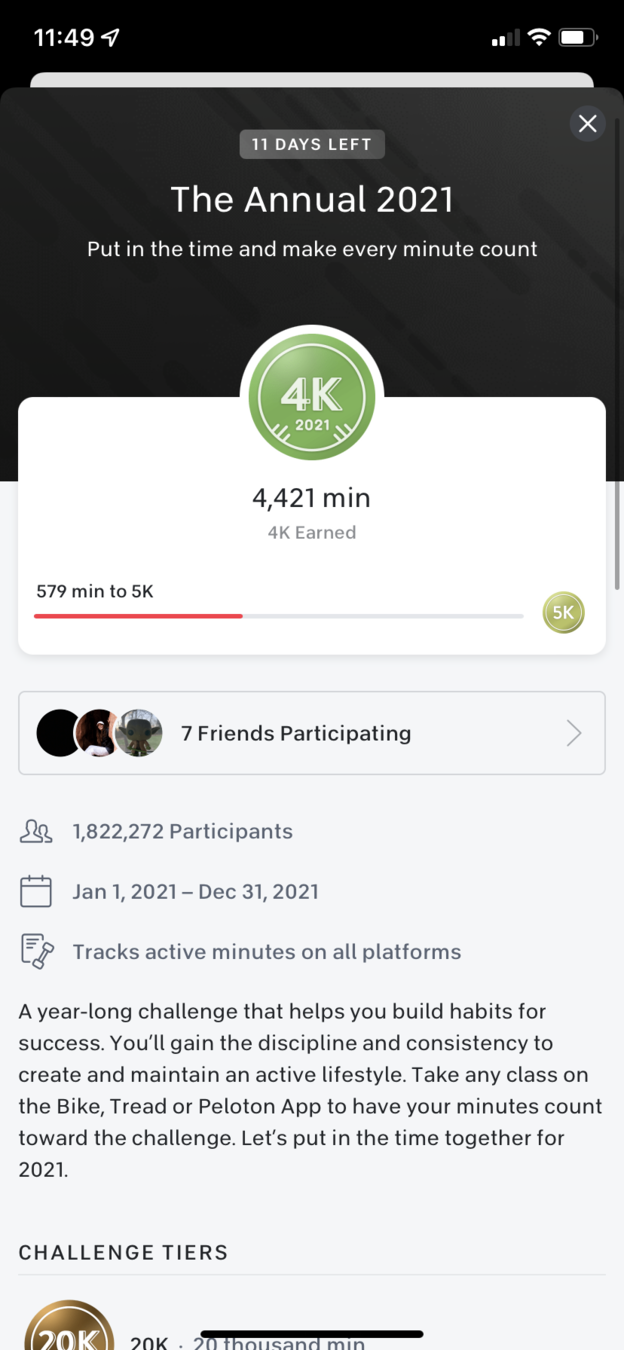
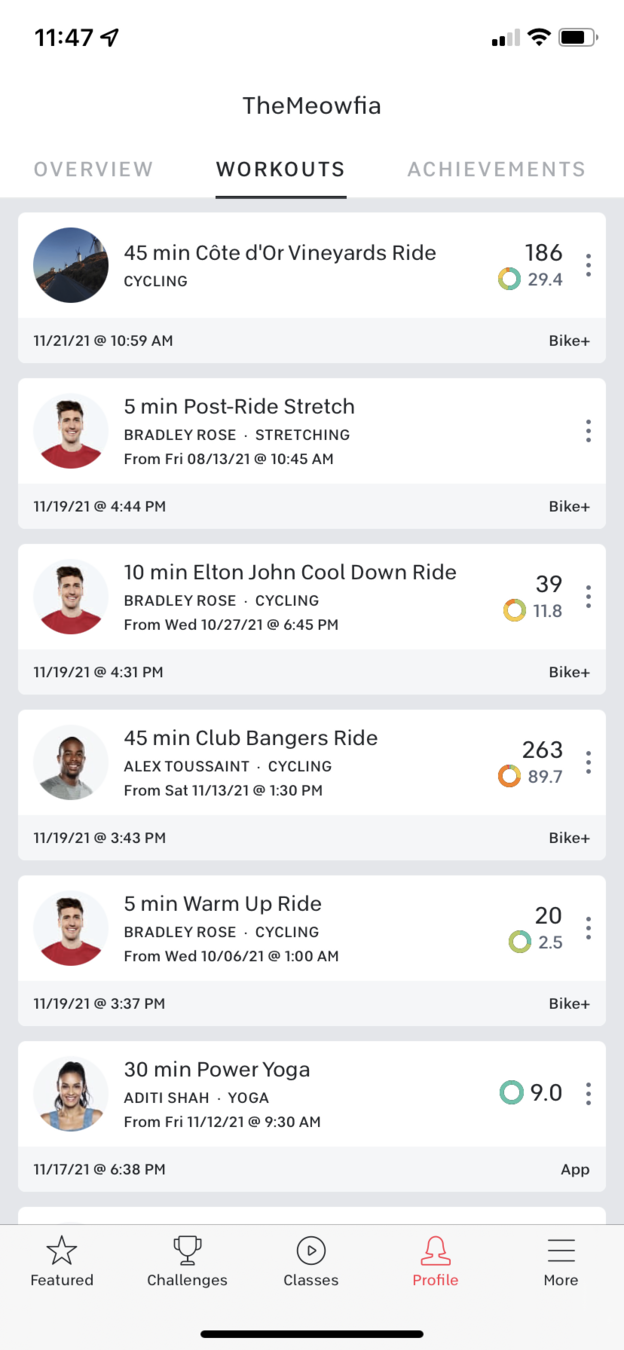



Basically, when you see your friends exercising, you want to join in too!





And that brings us to our third point, a feeling of accountability. Accountability is closely related to social norms.
accountability




When we feel like someone is watching or monitoring us, like when our exercise behavior is broadcast to people we care about, we feel compelled to act how we believe they expect us to act.




If we know that our in-group, and other people that we share personal identities with, can see whether we are exercising, it can motivate us to do so. The same is true of the other participants in live classes.
Accountability
When other people can see how we behave, we are more motivated to act how we are expected to act. Accountability can be deliberate, like mutually agreeing to check up on a friend's exercise habits, or part of the structure of the environment, like making your behavior public.




Your exercise behavior is broadcast to other riders via the leaderboard and the instructor during classes, allowing them to see your progress. This can really motivate you to push yourself to work harder!
Accountability


When other people can see how we behave, we are more motivated to act how we are expected to act. Accountability can be deliberate, like mutually agreeing to check up on a friend's exercise habits, or part of the structure of the environment, like making your behavior public.



Also, just as you can see what workouts and challenges your friends have completed, your friends can see how often you exercise, and what challenges and workouts you've completed.







When your actions are public knowledge, and those actions are an important part of your identity, it can be highly motivating for you to try and meet your in-group's expectations.
Public
behavior
+
Important Identity
=
Motivation



All-in-all the live comparisons during classes, and the ability for your friends to view your behavior, just as you can see theirs, makes for a strong sense of exercise accountability.


Peloton creates a community through solidifying an identity, establishing social norms by making desirable behaviors public, and cultivating an aura of accountability.


identity

social norms

accountability


You've reached the end of this ride! Way to go eveyone! As a well-earned reward, here's a downloadable chest sheet of this case study.




This is the last ride, but if you missed one or two, you can return to the ride selection screen to check the rest out. If you're all done, continue on to the brief epilogue, just one more minute to cool down.


Case study made by
Alex Moog
Paul Jürgens
Alex is a Behavioural Science Consultant at BeHive Consulting, and runs the YouTube channel Behavioral Science Toolkit. He enjoys learning about and spreading behavioral science knowledge, and loves games in all their many forms.
Paul is an independent visual designer and illustrator with a practical and positive approach to solving design problems part of the Habit Weekly team.
Click for a laughs 😂
Colors

Highlights / Buttons etc.
Buttons Hover
Info Cards / Divider
Background
Font: Josefin Sans / Google Fonts
Top Bar
Info Cards / Divider
Background
Less used
Background
Buttons
XXX %
LEARN MORE XX
XXX %
START
LEARN MORE XX
HABIT WEEKLY PRO
HABIT WEEKLY PRO
12 MINUTES

12 MINUTES

Speech Bubbles
Spin Diesel

Hi, I am Spin Diesel your Spindoctor!
TODAY 1:40 PM

Hi, I am Britney Gears!
TODAY 1:40 PM
Britney Gears


Hi, I am Britney Gears!
TODAY 1:40 PM

TODAY 1:40 PM
Graphics Overview
Elements Needed
- Landing page
- Font
- Color pallet
- Progress overview (rides)
- Progress indicators (bike icons)
- Avatar (Instructors)
- Case study overview
- Speech bubbles
- Embed frame (bicycle screen)
- Extra elements / backgrounds
Instructor Personas
Spin Diesel
Britney Gears



